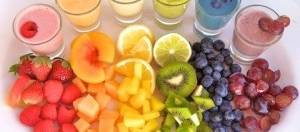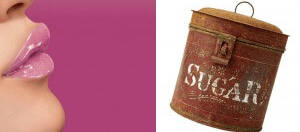3 Healthy Summer Smoothies | Easy Recipes

3 Healthy Summer Smoothies | Easy Recipes
It’s time to turn your healthy smoothie game up to 11. These fruit smoothie recipes will certainly tickle your taste buds and keep you cool this summer. In addition, making your own smoothie at home brings a certain satisfaction. When done right, they’re way healthier than ice cream, and when you take the first sip of divine nectar that you’ve concocted, you won’t be able to help but do a celebratory shoulder shake.
So, you’re going to need a blender. If you only have a food processor then that works too. Any time a smoothie recipe calls for bananas, using frozen ones you’ve stored into a sealed bag in the freezer will really add an element of cold, icy, deliciousness that unripe room temperature bananas CAN’T TOUCH. So yes, the next time you have a bunch of bananas that are brown and soft and frankly kind of ugly looking, peel those suckers and throw them in a bag in the freezer for your next smoothie. You’re welcome.
A note about sweetness: A lot of smoothie recipes call for adding brown sugar or another sweetener. News flash: FRUIT IS FULL OF NATURAL SUGARS and the USDA notes that bananas can contain anywhere from 9.91g to 18.59g of sugar. Remember the recommended amounts of sugar per day? [link to simple sugars article] The sugars in these smoothies count toward that number, so enjoy, but don’t go buck wild, sweets are treats, not staples.
So here are three solid smoothie recipes worth incorporating into your smoothie game:
Blueberry, green tea, banana
Serves: 1
Ingredients:
- 3 tablespoons water
- 1 green tea bag
- 1 teaspoon honey
- 1 cup frozen blueberries
- 1/2 medium banana
- 3/4 cup milk (almond, soy, rice—whatever you like)
Instructions:
- MICROWAVE water on high until steaming hot in a small bowl then add tea bag and allow to brew 3 minutes. Remove tea bag and stir honey into tea until it dissolves.
2. COMBINE milk, banana, then berries in a blender.
3. ADD tea then blend ingredients on highest setting until smooth. Stop then add some more milk or water. Stir with spoon and start again for a more liquified smoothie. Pour into glass and serve.
This recipe adapted from:
Banana ginger
Serves: 1
Ingredients:
- 1 cup milk (almond, soy, rice, coconut—whatever you prefer)
- 1 frozen banana
- 1/2 cup greek yogurt
- 1 tablespoon fresh ginger, peeled and grated
Instructions:
- COMBINE all the ingredients in a blender, blend on high until smooth.
- ENJOY and shoulder shake until your heart’s content.
This recipe adapted from:
http://www.doctoroz.com/recipe/banana-ginger-smoothie
Pineapple and banana with kale
Serves 1:
Ingredients:
- 1/4 cup coconut milk
- 3/4 cup frozen pineapple
- 1 frozen banana
- 1 cup stemmed and chopped kale
Instructions:
- COMBINE all the ingredients in a blender then puree until smooth and add small amounts of water if it’s too thick for your liking. Continue to blend until the consistency looks right for you.
This recipe adapted from:
http://www.realsimple.com/food-recipes/browse-all-recipes/kale-smoothie-recipe
So now you’re ready to throw down like a healthy smoothie BOSS. After all, you might as well spread the love, school your friends and family on how to make a healthy smoothie so they don’t have to settle for subpar fruit mush.





 YES! Contact me today to schedule a FREE no obligation consultation and trial workout.
YES! Contact me today to schedule a FREE no obligation consultation and trial workout.